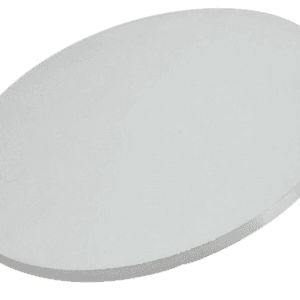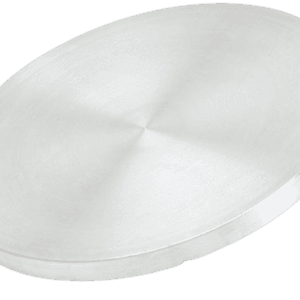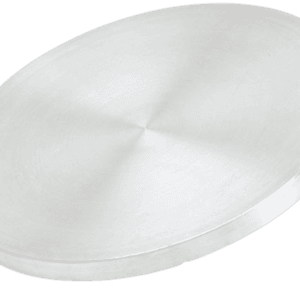Nickel Oxide Sputtering Target
Introduction
The Nickel Oxide (NiO) Sputtering Target from Thin Film Materials (TFM) is a high-performance ceramic material designed for thin film deposition. Nickel oxide is a p-type semiconductor with a wide bandgap and excellent chemical stability, making it an important material for electronic, optical, and catalytic applications. When fabricated into sputtering targets, NiO provides uniform thin films with controlled electrical and optical properties, suitable for both industrial production and advanced research.
Detailed Description
Nickel oxide sputtering targets are manufactured with high density and purity, typically 99.9% (3N) to 99.99% (4N). This ensures minimal contamination, reliable sputtering performance, and high-quality thin films.
Chemical Formula: NiO
Appearance: Green to black ceramic solid
Density: ~6.67 g/cm³
Melting Point: 1,955 °C
Crystal Structure: Cubic (NaCl-type)
TFM provides NiO sputtering targets in various shapes, including discs, rectangular plates, and custom geometries. We also offer bonding services with copper or titanium backing plates, which improve thermal conductivity, reduce stress, and extend target lifetime.
Applications
Nickel oxide sputtering targets are widely used in:
Semiconductors: p-type transparent conductive films
Electrochromic devices: smart windows and energy-efficient displays
Gas sensors: detection of hydrogen, carbon monoxide, and volatile compounds
Photovoltaics: hole transport layers in perovskite and dye-sensitized solar cells
Catalysis: thin film catalysts for electrochemical and photocatalytic reactions
R&D: advanced oxide electronics and functional coatings
Technical Parameters
| Parameter | Typical Value / Range | Importance |
|---|---|---|
| Purity | 99.9% – 99.99% | Higher purity improves thin film consistency |
| Diameter | 25 – 150 mm (custom up to 300 mm) | Compatible with a wide range of sputtering systems |
| Thickness | 3 – 6 mm | Influences sputtering rate and film thickness |
| Bonding Options | Indium / Elastomer | Enhances adhesion and thermal stability |
| Backing Plate | Copper / Titanium | Improves heat transfer and structural support |
Comparison with Related Materials
| Material | Key Advantage | Typical Application |
|---|---|---|
| Nickel Oxide (NiO) | P-type semiconductor, stability | Transparent conductive films, sensors |
| Zinc Oxide (ZnO) | N-type semiconductor, low cost | Transparent electronics, photovoltaics |
| Tin Oxide (SnO₂) | High optical transparency | Gas sensors, displays |
FAQ
| Question | Answer |
|---|---|
| Can Nickel Oxide sputtering targets be customized? | Yes, TFM offers custom diameters, thicknesses, and bonded backing plates. |
| Do you provide bonding services? | Yes, indium and elastomer bonding are available to improve performance. |
| How are the targets packaged? | Each NiO target is vacuum-sealed, cushioned with protective foam, and shipped in export-safe cartons or crates. |
| Which industries use NiO targets most? | Electronics, energy, display technologies, sensor manufacturing, and materials research. |
Packaging
All Nickel Oxide sputtering targets are vacuum-sealed and securely packaged to prevent contamination and damage during shipping. Protective foam and export-approved cartons or wooden crates are used to ensure safe delivery worldwide.
Conclusion
The Nickel Oxide (NiO) Sputtering Target from TFM delivers reliable performance for thin film deposition, with excellent stability, high purity, and customizable dimensions. Whether used in semiconductors, energy devices, or research, our NiO targets ensure consistent quality and long-term reliability.
For detailed specifications, pricing, and custom orders, please contact us at sales@thinfilmmaterials.com.
Nickel Oxide Sputtering Target Handling Notes
Specialized bonding services for Nickel Oxide Sputtering Targets, including indium and elastomeric bonding techniques, enhance performance and durability. Thin Film Materials (TFM) ensures high-quality solutions that meet industry standards and customer needs.
We also offer custom machining of backing plates, which is essential for sputtering target assembly. This comprehensive approach improves target design flexibility and performance in thin film deposition. Our channels provide detailed information about bonding materials, methods, and services, helping clients make informed decisions.







Reviews
There are no reviews yet.